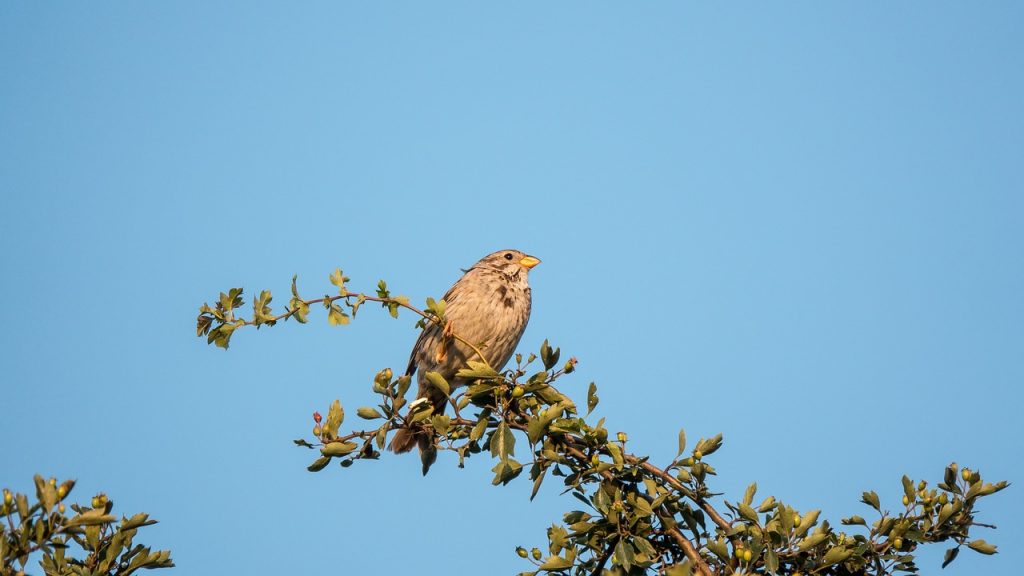On November 9th 2024, 22 randomly-selected citizens from the municipalities of Bollnäs, Ljusdal and Ovanåker assembled in Alfta for the first day of the Voxnadalen citizens’ jury about the management of municipally-owned forests. This initiative is a collaboration between the LANDPATHS research programme and Voxnadalen biosphere reserve. Through small-group discussions, informational presentations and a field trip to some forest plots, this diverse group of people learned, shared and discussed perspectives on the different values of forests.
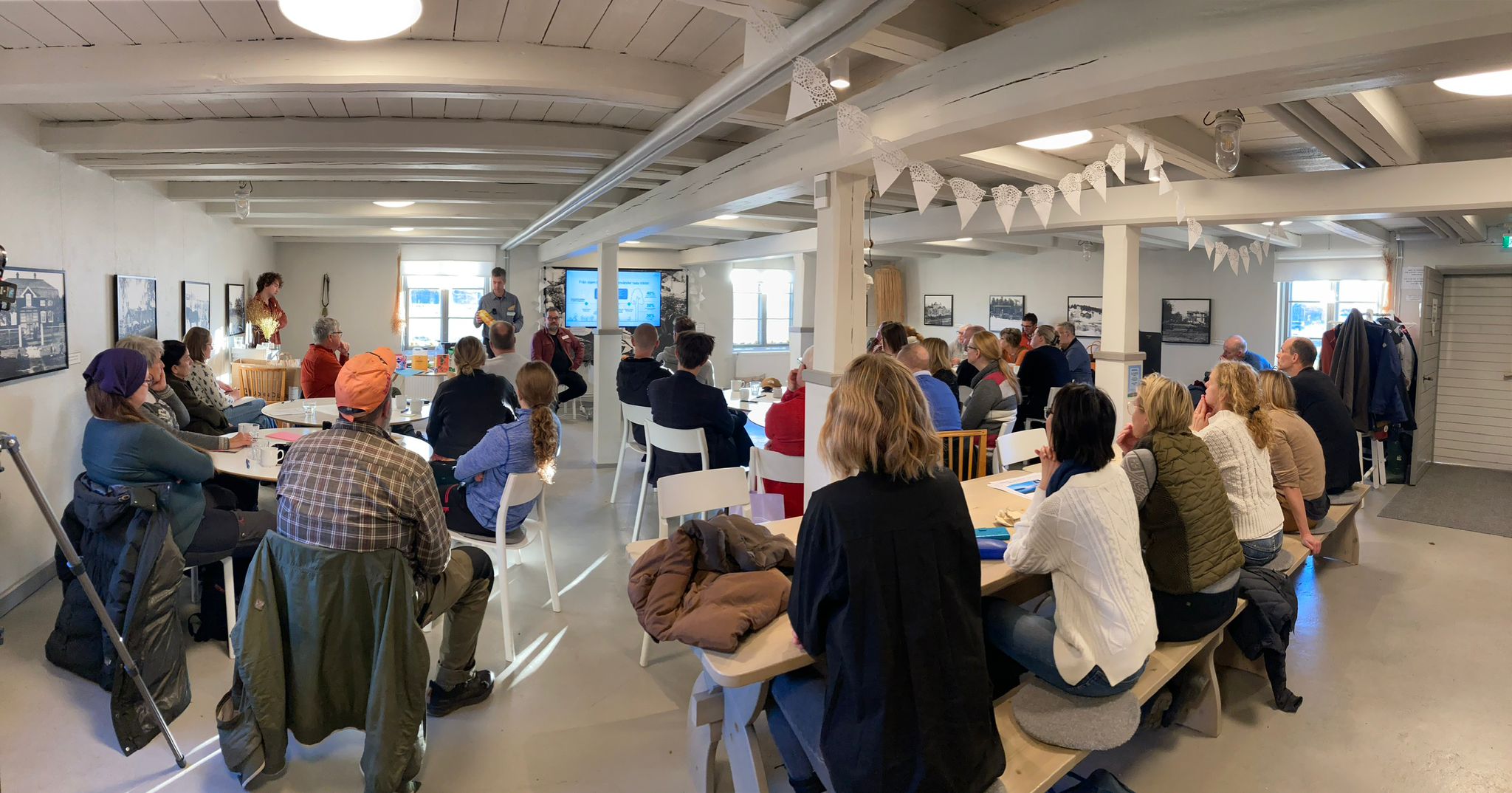
Lead facilitator Johan Hammarlund from Kairos Future, who designed the process together with Tim Daw and Vera Telemo from the LANDPATHS team, introduced the concept of a citizens’ jury. The process emphasises considered, open and respectful dialogue, and the exchange of perspectives. These aspects were reflected in the first exercise the participants completed: each table of 7-8 people defined their own rules of discussion for the day, such as respectful language, letting people make their point, and turning phones to silent.
Learning about ecosystem services in the woods
The group then went out together to visit a forest, stopping at two different sites. On the way, Urban Larsson from the Swedish Forest Agency, the first of the day’s knowledge-brokers, introduced the participants to the four groups of ecosystem services that were discussed during the day: provisional, cultural, regulating and supporting services.
The first stop was a 2.7 hectare key habitat from 1996 that is protected by a nature conservation agreement. The participants made a steep descent to where the clear Långbäcken stream winds calmly through a forest of lichen-covered spruce trees, softly illuminated by the November sun on the day of the excursion. They gathered around Urban Larsson, who asked the participants how they felt in this place. There were expressions of calm, peace and seeing beauty, as well as a forest “as it should be”, with appreciation of the untouched appearance due to both dead and living trees. Urban also asked the participants to mention the different ecosystem services they could see. Examples mentioned by the participants included mushroom and berry provision, a place for hunting, cultural services such as a place to experience calm, and a place of cultural history where water has an important function. The area is also home for several endangered species such as the fungus Phellinidium ferrugineofuscum and freshwater pearl mussels.
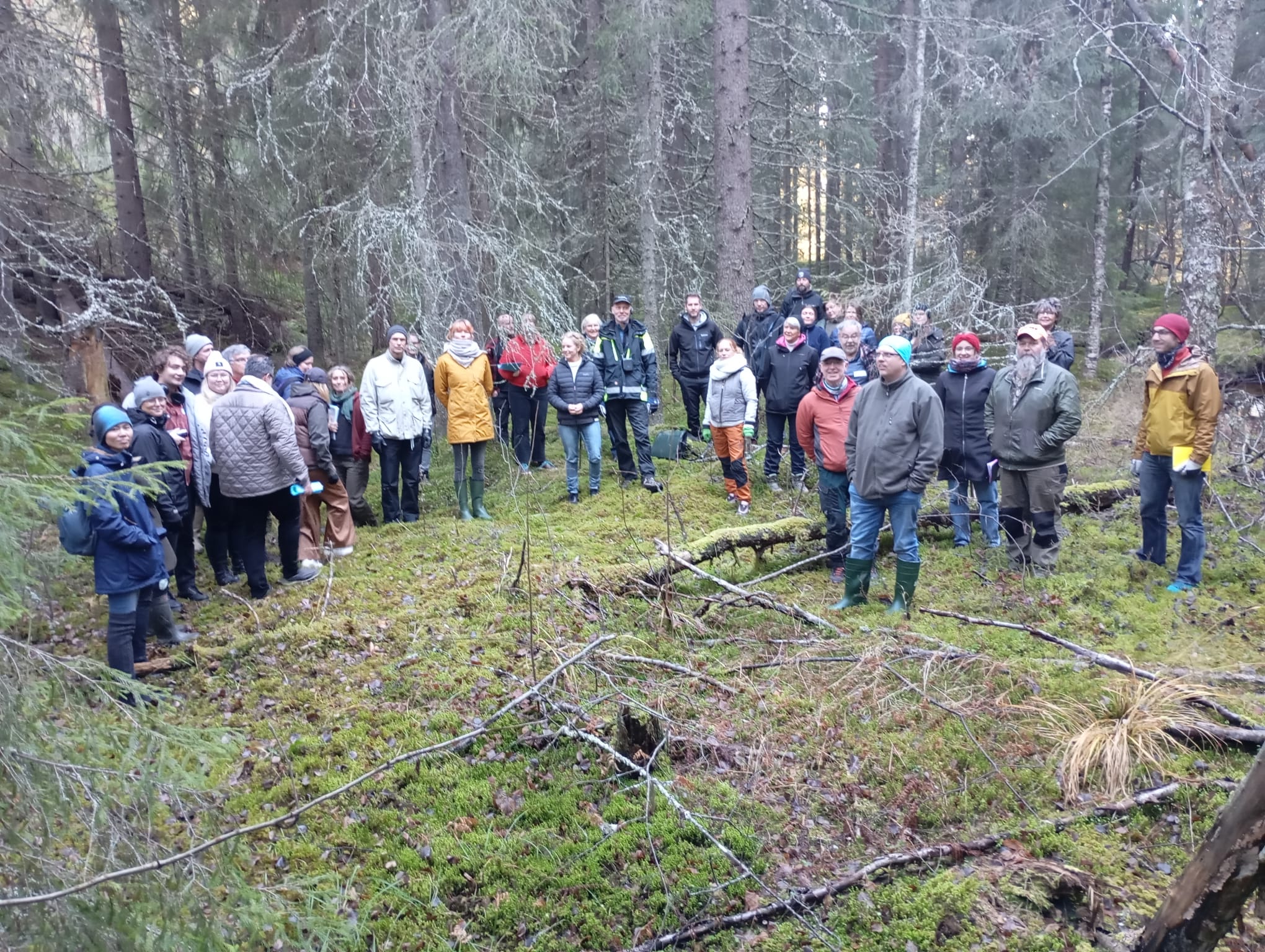
The second stop of the excursion brought the participants to Gammel-homna, a demonstration site for restoration of water streams and part of the local project Rivers of Life. A short walk through rocky terrain, surrounded by blueberry-covered ground under spruce, pine and birch trees, brought the participants to the border of a small, lively flowing river.
Here, the second knowledge-broker, Helén Berggren, Head of Culture at Bollnäs municipality, introduced the importance of cultural values of the forest and her work in Bollnäs with young people to help them experience and create a relationship with the forest. Helén’s talk was accompanied by the appearance of two teenage girls dressed in white, dancing through the forest and creating a magical ambience around the participants. Some participants opened up to share how they had experienced the forest in their childhood and how they built a relationship to the forest, as well as how raising the topics of local culture and history can be a way to create identities and roots for young people in their local environments.
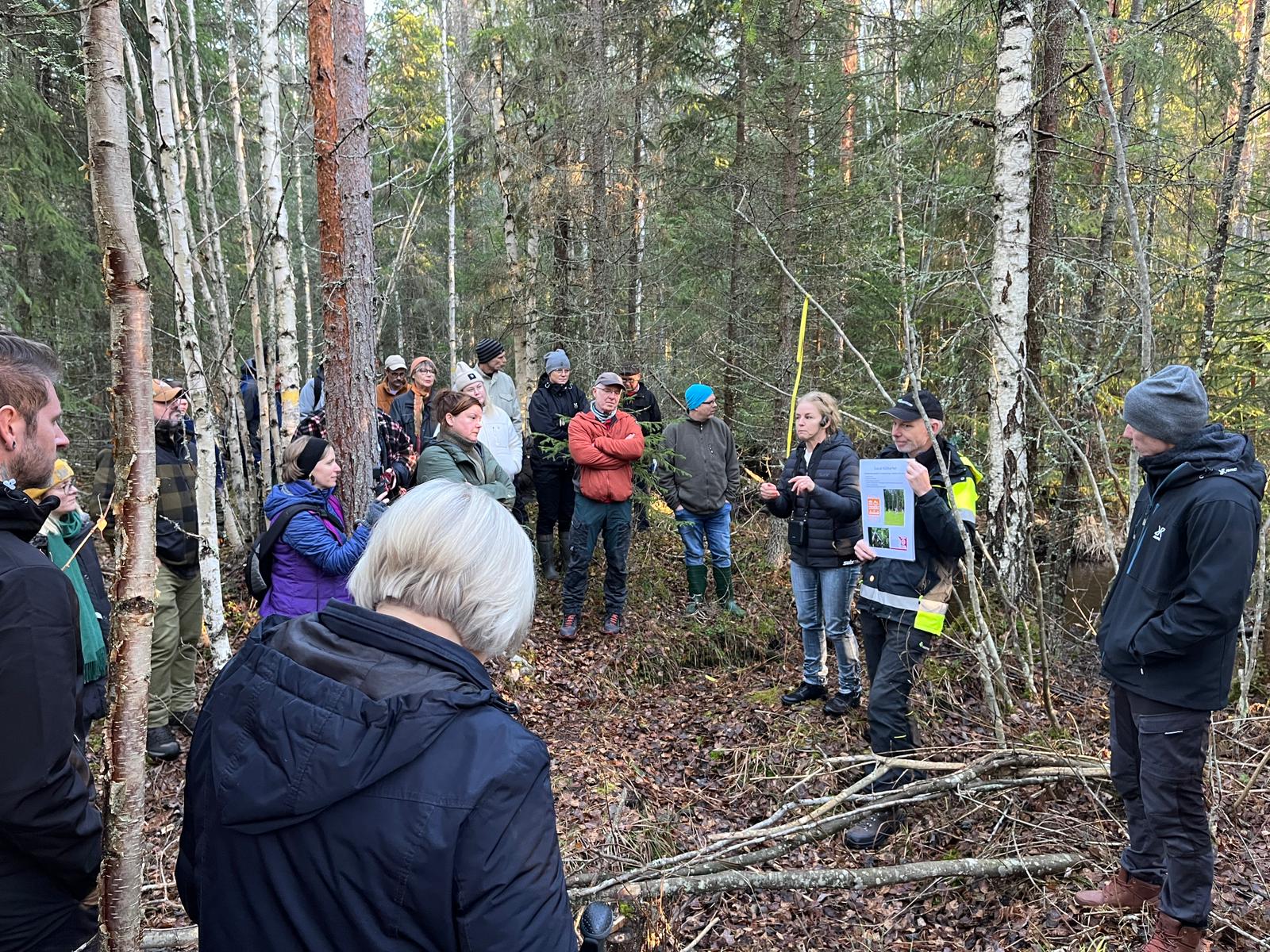
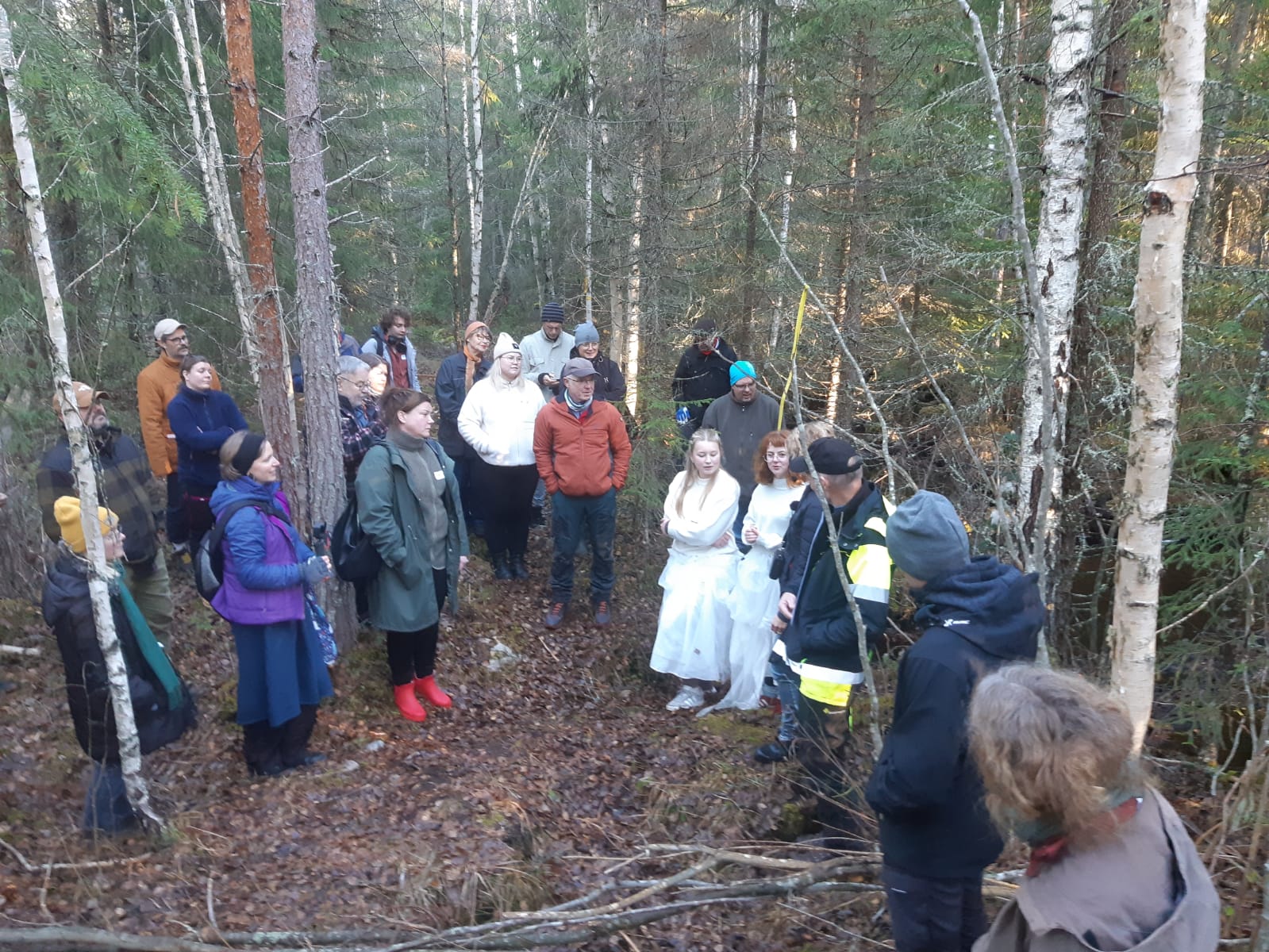
From forest products to red-listed species
Back at Ol-Anders Gård, the participants shared a lunch before listening to the other two knowledge sharers of the day. The first was Anders Lundberg from Billerud Korsnäs, who presented a variety of products from the forest such as timber and microcellulose that is used in medical drugs, packaging, soap, hygiene products, fabric, and novel packaging such as paper bottles. Anders also emphasised the economic importance of forest-based production nationally, and especially in Gävleborg. The participants engaged in a lively discussion about Anders’ contributions over the following coffee break. Next, Matthias Ahlstedt from Naturskyddsförening in Dalarna informed the participants about planetary boundaries, the carbon balance in the forest and what the effects of harvesting are on the balance, as well as the rationale behind the red-list for endangered species.

Creating visions and unlocking new perspectives
Participants ended the day by deliberating about the pros, cons and interest conflicts related to the different values and uses that had been identified throughout the day. Each participant wrote down their own visions for the municipal forests in 15-25 years from now. Collectively, the participants expressed appreciation for the process and the opportunity to talk with people with different backgrounds and experiences. One participant phrased her experience as “unlocking her own thinking” and that she got to open up to new perspectives. Hanna Alfredsson from Voxnadalen Biosphere Reserve expressed gratitude for the opportunity to hear voices from a wider variety of people than are usually represented in discussions about the management of the biosphere.
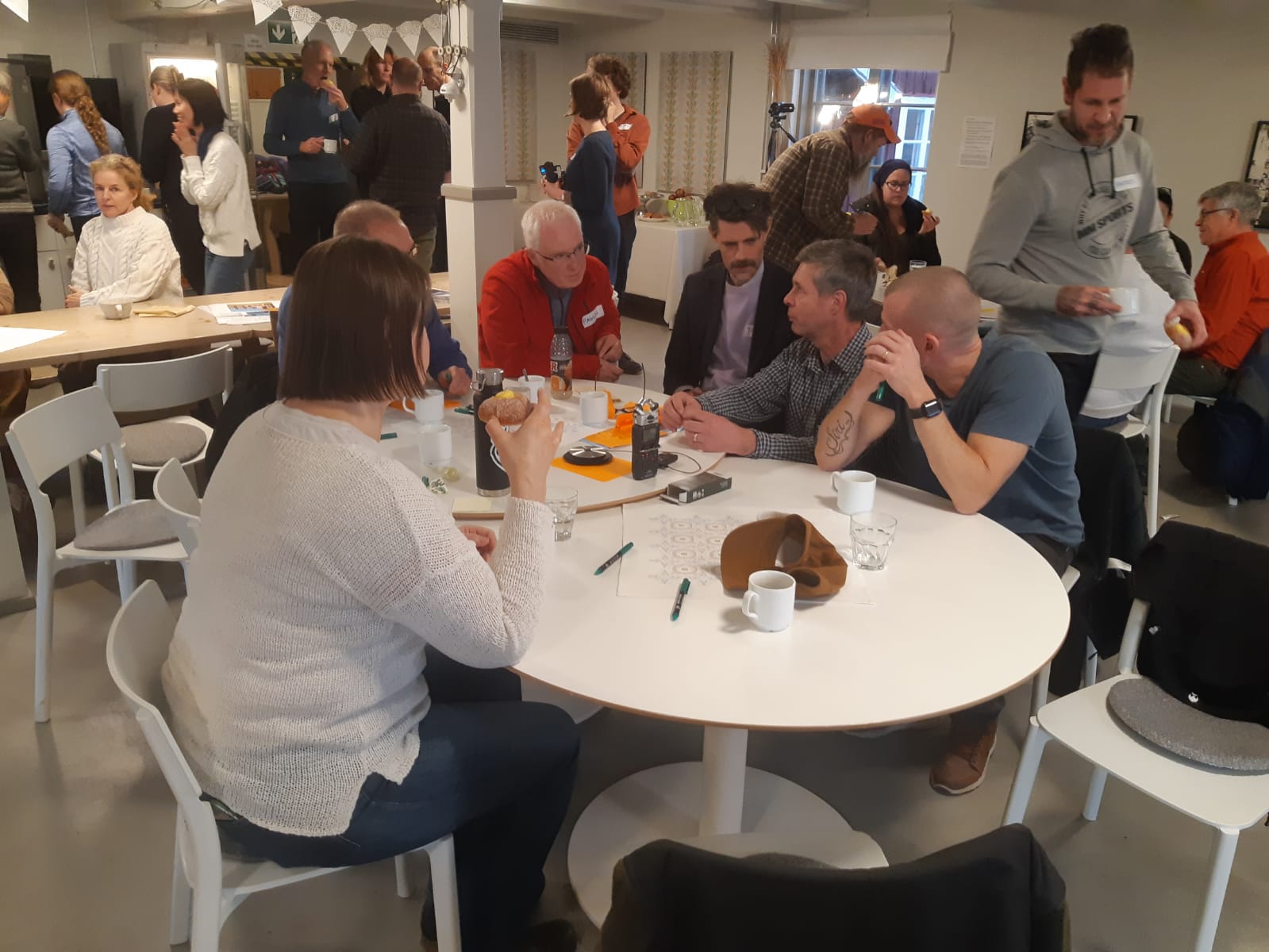
Sofie Zetterlund from Bollnäs municipality is keen to hear about the results of the citizens’ jury and hopes that they will inspire new ways of management. During the second day of the process on November 23rd, representatives of forest management in each of the three municipalities, as well as local politicians, are invited to receive the suggestions from the participants about their perspectives on management of the municipal forests to encourage versatile and multifunctional use and values.
Research on citizens’ juries
In the LANDPATHS research programme, Fanny Möckel (Uppsala University) and Tim Daw (Stockholm Resilience Centre) are studying the scientific process of citizens’ jury both in Voxnadalen and in Nämdö, through on-site observation, a before-and-after survey, and interviews with the participants. Read all of the news about the LANDPATHS minipublics.
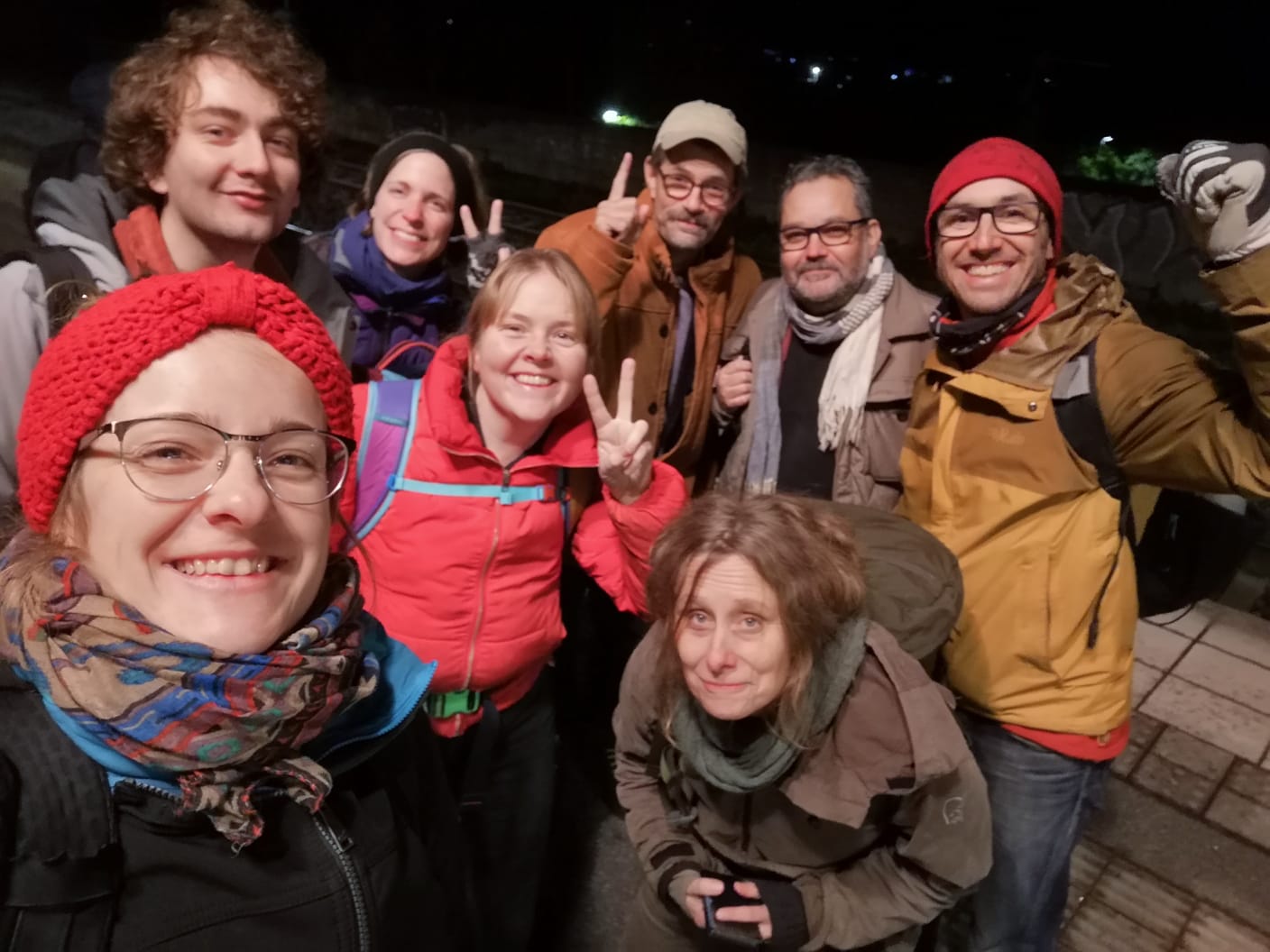
First row (left to right): Fanny Möckel, Vera Telemo, Anna Bohman
Second row (left to right): Elias Marin, Judith Lundberg-Felten, Jonathan Mattebo Persson, Johan Hammarlund, Tim Daw
Photo: Fanny Möckel
For more information about the mini publics being organised within LANDPATHS, contact Tim Daw at Stockholm Resilience Centre.

